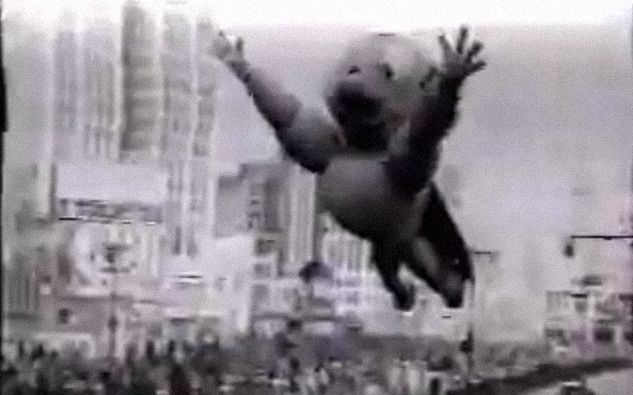We all watch the Thanksgiving Day Parade® to see what big helium balloon character will float down the block next, but how did the tradition even come to be?
No plan for a helium balloon character
The Macy’s Thanksgiving Day Parade wasn’t always the helium balloon character spectacle it is now. In 1924, the first year that Macy’s took the parade over from Bamberger’s store in New Jersey, the audience waved at floats, performing bands, and live animals from the Central Park Zoo.
The original plans never included the now beloved helium balloon character.
In fact, helium was only discovered on our planet about 20 years earlier at this point, and the National Helium Reserve didn’t even exist until the second year of the Macy’s Thanksgiving Day Parade.
But everything began to change when Macy’s decided to hire a street performer to design their window display.
The father of Thanksgiving Day parade balloons
Tony Sarg, a German born in Guatemala who moved to New York in 1915, found wide success in the United States as an illustrator and puppeteer. In New York City, he was known to perform puppet shows on the streets.
Some time in 1927, Macy’s caught wind of Sarg’s skills and hired him to design a window display for the store.
Air and sticks
Working with Goodyear Tire and Rubber Company in Akron, Ohio, Sarg designed Macy’s a series of animal-shaped balloons, which ultimately ended up replacing the live animals used during the parade in the previous years.
One of the balloons was a massive Felix the Cat, the first of what would become a nearly century-long, ongoing parade tradition of flying giant helium balloons in the shape of various beloved pop culture characters.
Felix started it all.
Felix was filled with air though, abiding by Sarg’s original vision to make the balloons seem like they were floating by holding them up with sticks from below. An “upside-down marionette” show of sorts.
However, with newly discovered uses for helium combined with the recent availability of the gas, the plan would inevitably change just a year later.
The first helium balloon characters
By 1928, Sarg ditched the sticks for strings and the air for helium, and the teams walking below now kept the characters – this time a nuclear family – from flying away instead of struggling to hold them up.
One of the really interesting things about the ’28 Macy’s Thanksgiving Day Parade was what everyone learned at the very end of it.
At the finale, the helium balloons were set loose to the skies, but to everyone’s shock, they burst to pieces when they got too high.
It was this realization that led to a modification of the design for the following year – the addition of a safety valve that would vent just enough gas to allow a helium balloon character to float lower in the sky for several days.
Address patches were sewn into the balloons at this time as well. If the balloon crashed in your yard and you returned it to Macy’s, you would receive a special gift from the store.
The Macy’s Thanksgiving Day Parade today
Since the advent of the helium balloon character back in the late 1920s, not much has changed other than the fact that the parade seems to get bigger each year.
Just three years ago, the parade balloons required a total of 400,000 cubic feet of helium. This year, more than 700,000 cubic feet will be pumped into the helium balloon characters.
That’s an unbelievable amount of helium. And getting it to the parade is no easy task.
Trucking 700,000 cubic feet of helium to New York City
We just came across a small article tucked away at the bottom of page 30 in this month’s issue of Popular Mechanics magazine, and it is the perfect ending to our little story.
In the piece, author Matt Jancer expertly illustrates how 700,000 cubic feet of helium is taken from storage in Bethlehem Pennsylvania, compressed and transferred into tube trailers, then loaded onto trucks and driven to Manhattan on Thanksgiving Day Eve to begin filling the 40-foot tall balloons.
If you have a chance, pick up a copy of the November issue and check out the complicated process that must take place each year to wow the 50-some-million of us watching in the streets and at home. Or if you prefer, you can now listen to the story on Popular Mechanics’ free “How Your World Works” podcast.
A new finale
The one thing that has changed since the 1920s and 30s is what happens with the balloons at the end of the parade. No longer are the helium balloon characters set free with the hopes that someone will find and return the deflated bodies to claim a prize.
These days, vents are simply opened up on the top of the balloons, the helium is released into the atmosphere, and the bodies are folded up and hauled off.
Sources: Macy’s, Wikipedia, Popular Mechanics November 2015 Issue, Volume 192, No. 10


